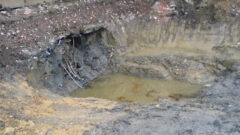
3D-printed sugar scaffolds
Sugar is traditionally associated with our favourite treats – sweets, chocolate, ice cream, etc. As such, most of us tend to think of our waistlines rather than our internal organs when the subject is raised. But the properties of sugar that enable confectionary artists to create delicate sugar sculptures are the same ones that make it a viable tool in science. If you’re looking for a start-up business grant for your 3D printing company, keep reading – your future could be with sugar!
Sugar as a scaffold for organ growth
In an article published in May 2018, the University of Illinois announced that a PhD graduate and professor of bioengineering had come up with a new kind of 3D printer which could print detailed biological structures out of sugar.
Of course, there are other 3D printers able to work with sugar, but the one developed by Matthew Gelber and RohitBhargava uses isomalt, a sugar substitute derived from beets. When melted down and printed, structures made with isomalt cool and solidify to create a sturdy scaffold that could prove useful in such fields as biomedical engineering. What’s the great thing about that? Bhargava notes that shapes can be created around which cells and tissue can be grown; the scaffold would then dissolve away leaving an intact area of tissue.
“One possible application is to grow tissue or study tumours in the lab,” he tells TechXplore. “Cell cultures are usually done on flat dishes… it’s not a very dynamic way to look at how a system actually functions in the body. In the body there are well-defined shapes, and shape and function are very closely related.”
Bhargava suggests that once an organ is grown, the sugar would dissolve to leave a self-sustaining organic structure. The tubes and channels left from the scaffold could – in theory – be used like blood vessels to transport nutrients.
The challenges of a sugar scaffold
Trying to 3D print sugar for tissue and organ growth has its challenges. Overdo the pressure and you have a formless result; overheat it and it crystallises or burns. Isomalt, on the other hand, is less prone to this. Combined with a carefully calibrated printer, which uses specific speed, temperature and pressure settings, complex organic structures can be created without the burning or fragility effects.
The next step for the team is to develop coatings that control the rate of dissolution, much the same as the coatings on medical tablets.
Grants for medical research
Most of the medical research carried out at universities in the UK relies on grant funding, which can be hard to come by. The use of business grants enables companies looking to take medical ideas further or develop their own health-related projects to fund their work in ways that negate the need for government funding. An alternative way to cover some of the costs involved with such projects is, of course, to claim R&D tax credits.
For further information on business grants and R&D tax relief, contact R&D Tax Solutions today.





